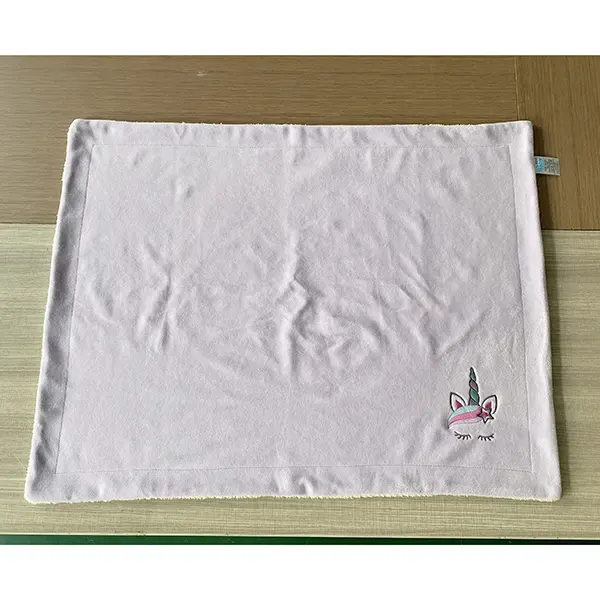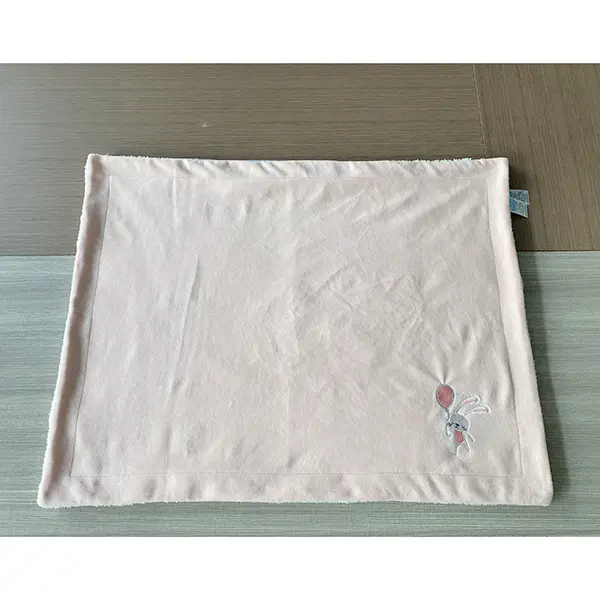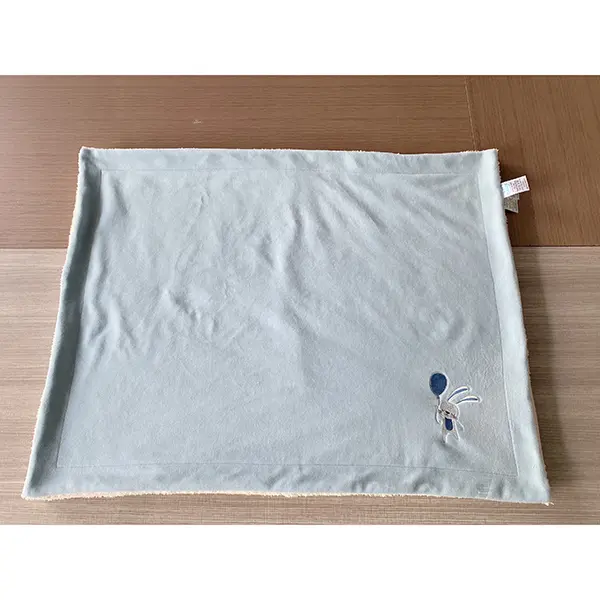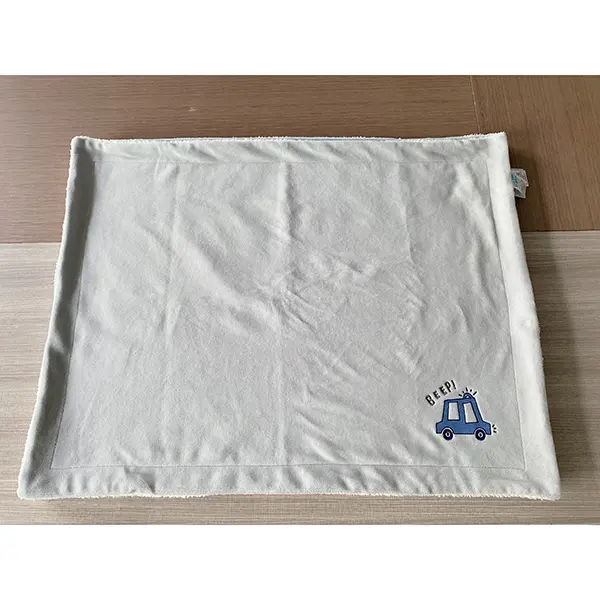Cozy 100% Polyester Blankets: Soft, Durable & Easy Care
The Ascendant Era of Polyester Textiles: Industry Trends and Projections
The textile industry is in a perpetual state of evolution, driven by consumer demand for performance, sustainability, and aesthetic appeal. Within this dynamic landscape, the **100 percent polyester blanket** has emerged as a cornerstone product, celebrated for its unparalleled versatility and growing technological sophistication. The global polyester fiber market, a primary component for these blankets, was valued at approximately USD 90 billion in 2022 and is projected to exceed USD 140 billion by 2030, exhibiting a Compound Annual Growth Rate (CAGR) of over 5.5%. This robust growth is largely attributable to the material's inherent advantages: durability, resistance to shrinking and stretching, excellent color retention, and a highly favorable warmth-to-weight ratio.
Current trends highlight a strong consumer preference for easy-care textiles, which polyester inherently offers, being machine washable and quick-drying. Furthermore, the increasing focus on sustainability has spurred innovations in recycled polyester (rPET) production, making the **100 percent polyester blanket** an increasingly eco-conscious choice. Advancements in fiber technology, such as the development of ultra-fine microfibers, have dramatically enhanced the softness and drape of polyester blankets, making them virtually indistinguishable from natural fibers in terms of tactile comfort, while retaining superior performance characteristics. The market for specialized products like the `polyester swaddle blanket` and `100 percent polyester throw blanket` is also witnessing significant expansion, driven by demand for specific functionalities and aesthetic considerations in both baby care and home decor segments.

Technical Parameters & Performance Benchmarks
Understanding the technical specifications of a **100 percent polyester blanket** is crucial for appreciating its performance. Key parameters often include Grams per Square Meter (GSM), fiber denier, pile height, and specific finishing treatments. GSM refers to the weight of the fabric, directly impacting its warmth and density. For instance, a heavier GSM (e.g., 300-400 GSM) typically indicates a warmer, more substantial blanket, ideal for winter use, while lighter GSMs are suitable for throws or summer use. Fiber denier, a unit of linear mass density of fibers, dictates the fineness and softness; lower denier numbers indicate finer, softer microfibers. Pile height refers to the length of the fibers on the surface, contributing to the plushness and insulating capabilities.
Typical Parameters for **100 Percent Polyester Blanket**:
These parameters are rigorously tested against international standards such as ISO (International Organization for Standardization), ASTM (American Society for Testing and Materials), and AATCC (American Association of Textile Chemists and Colorists) to ensure consistent quality and performance across all batches of **100 percent polyester blanket** products.

Diverse Application Scenarios and Technical Advantages
The inherent properties of polyester make a **100 percent polyester blanket** suitable for a vast array of applications, spanning various industries and consumer needs. Its technical advantages are particularly pronounced in scenarios demanding durability, ease of maintenance, and hypoallergenic properties.
Key Application Scenarios:
- Baby Care: Products like the `polyester swaddle blanket` and our featured 100% polyester double layer winter blankets for baby (Product URL: https://www.sthometextile.com/100-polyester-double-layer-winter-blankets-for-baby.html) are paramount. Their softness, warmth, and hypoallergenic nature protect delicate skin and ensure comfort, while ease of washing is critical for hygiene.
- Home Textiles: From cozy `100 percent polyester throw blanket` for living rooms to heavier bedding options, polyester offers aesthetic appeal combined with functionality. Its resistance to wrinkles and fading keeps homes looking fresh.
- Hospitality Sector: Hotels and resorts often choose polyester blankets for their durability, ability to withstand frequent washing, and consistent appearance, ensuring a high standard of guest experience.
- Outdoor & Travel: Lightweight and quick-drying, polyester blankets are ideal for camping, picnics, and travel, offering warmth without bulk.
- Pet Care: Pet beds and blankets made of **100 percent polyester blanket** are popular due to their durability, ease of cleaning from pet hair and odors, and comfort for animals.
Technical Advantages for the End-User:
- Superior Durability and Longevity: Polyester fibers are inherently strong and resistant to abrasion, stretching, and shrinking. This means a **100 percent polyester blanket** maintains its integrity and appearance even after extensive use and washing, providing an extended service life compared to many natural fibers.
- Exceptional Warmth-to-Weight Ratio: The fine structure of polyester microfibers allows them to trap air efficiently, creating excellent insulation properties without excessive bulk or weight. This is particularly advantageous for winter blankets and `100 percent polyester throw` options.
- Hypoallergenic and Allergen Resistant: Polyester is inherently resistant to common allergens such as dust mites, mold, and mildew. This makes the **100 percent polyester blanket** an ideal choice for individuals with allergies or sensitive skin, including infants, where health and safety are paramount.
- Effortless Maintenance: Polyester is largely stain-resistant and dries quickly. It can be machine washed and dried, retaining its shape and color without special care, making it incredibly convenient for busy households and commercial settings.
- Vibrant Color Retention: Polyester fibers hold dye exceptionally well, leading to superior colorfastness. Colors remain vibrant and true over time, resisting fading even after repeated exposure to light and washing.
- Pilling Resistance: Quality polyester blankets are treated and constructed to resist pilling, ensuring a smooth, soft surface that remains aesthetically pleasing and comfortable over its lifespan.

The Meticulous Manufacturing Process of a **100 Percent Polyester Blanket**
The creation of a high-quality **100 percent polyester blanket**, particularly a sophisticated product like the 100% polyester double layer winter blankets for baby, involves a series of advanced textile manufacturing processes. This multi-stage journey ensures the final product meets stringent quality, comfort, and safety standards.
Process Flow Explained:
-
1. Polymerization & Fiber Extrusion (Melt Spinning):
The process begins with polyethylene terephthalate (PET) pellets, the raw material for polyester. These pellets are melted and then extruded through a spinneret (a device with fine holes) to form continuous filaments. This 'melt spinning' ensures uniform fiber thickness (denier) and strength. The filaments are then stretched to align their molecular structure, enhancing their tensile strength and elasticity.
→ (Raw PET Pellets) → (Melting & Extrusion) → (Stretching & Cooling) → (Polyester Filaments) -
2. Yarn Formation & Fabric Production (Knitting/Weaving):
The continuous polyester filaments are then texturized and twisted into yarns. For blankets, common fabric constructions include knitting (e.g., creating fleece, minky, or coral fleece fabrics known for their softness and stretch) or weaving (for more structured fabrics). For our double-layer baby blankets, advanced knitting techniques are typically employed to create exceptionally soft, plush surfaces on both sides, such as a super soft minky dot fabric on one side and a cozy faux fur or Sherpa on the other.
→ (Filaments) → (Yarn Production) → (Fabric Knitting/Weaving) → (Greige Fabric) -
3. Dyeing & Finishing:
The 'greige' (undyed) fabric undergoes dyeing to achieve the desired colors. Polyester has excellent dye uptake, ensuring vibrant and long-lasting hues. Following dyeing, the fabric enters the finishing stage. This is critical for tactile feel and performance:
- Brushing/Napping: Mechanical brushes raise the fibers on the fabric surface, creating a soft, fuzzy feel (like fleece).
- Shearing: Excess fibers are trimmed to achieve a uniform pile height.
- Anti-Pilling Treatment: Chemical or mechanical treatments are applied to prevent the formation of fiber balls on the surface, ensuring the blanket remains smooth and aesthetically pleasing.
- Softening Agents: Applied to enhance the handfeel, making the fabric exceptionally soft and comforting.
→ (Greige Fabric) → (Dyeing) → (Brushing/Napping/Shearing) → (Anti-Pilling Treatment) → (Softening) → (Finished Fabric Rolls) -
4. Cutting & Sewing (Double Layer Construction):
Large rolls of finished fabric are precision-cut into the required blanket dimensions using automated cutting machines. For a `double layer winter blanket`, two distinct fabric layers (e.g., minky and Sherpa) are carefully aligned and then sewn together. This typically involves durable overlock stitching or decorative binding around the edges to secure the layers and provide a neat, robust finish.
→ (Finished Fabric) → (Automated Cutting) → (Layer Alignment & Sewing) → (Edge Finishing/Binding) → (Assembled Blanket) -
5. Quality Control & Packaging:
Throughout the entire process, rigorous quality control checks are performed. This includes visual inspections, dimensional checks, weight verification (GSM), colorfastness tests (AATCC/ISO 105), shrinkage tests (ISO 6330), and pilling resistance tests (ASTM D3512). For baby products, adherence to OEKO-TEX Standard 100 (ensuring no harmful substances) and CPSIA (Consumer Product Safety Improvement Act) compliance is critical. Only blankets that pass all these stringent checks proceed to folding, labeling, and packaging, ready for distribution.
→ (Assembled Blanket) → (Multi-stage QC & Testing) → (Folding & Labeling) → (Packaging) → (Final Product Ready for Shipment)

The service life of a well-manufactured **100 percent polyester blanket**, particularly those adhering to robust standards like our 100% polyester double layer winter blankets for baby, can extend for many years, often exceeding 5-7 years with proper care. This longevity is a testament to the durability inherent in polyester and the advanced manufacturing and finishing processes that enhance its resilience and aesthetic retention. Such products are well-suited for any application requiring high durability and consistent performance, including regular use in homes, childcare facilities, and even light commercial settings where frequent washing is common.
Manufacturer Comparison, Customization, and Success Stories
When selecting a supplier for `100 percent polyester blanket` products, discerning buyers look beyond just price. Key factors include adherence to international quality standards, ethical manufacturing practices, customization capabilities, and a proven track record of reliable delivery and customer satisfaction.
Choosing the Right Manufacturer:
A reputable manufacturer, like ST Home Textile, distinguishes itself through a commitment to excellence across several pillars:
- Certifications and Compliance: Holding certifications such as ISO 9001 (Quality Management System) and OEKO-TEX Standard 100 (testing for harmful substances) demonstrates a commitment to quality and safety, particularly vital for a `polyester swaddle blanket` or any `100 percent polyester throw blanket` used in close contact with skin.
- Vertical Integration and Material Sourcing: Manufacturers with strong control over their supply chain, from fiber procurement to final packaging, can ensure consistent quality, optimize costs, and minimize lead times.
- R&D and Innovation: A forward-thinking company invests in research and development to introduce new fiber technologies, fabric constructions, and finishing treatments, keeping their **100 percent polyester blanket** offerings at the forefront of market demands.
- Transparent and Responsive Customer Support: Clear communication, efficient order processing, and effective post-sales support build lasting partnerships.
Tailored Customization Solutions:
One of the strengths of working with specialized manufacturers is the ability to offer comprehensive customization. This allows clients to differentiate their products and meet specific market demands for their **100 percent polyester blanket** line.
- Dimensions and Weight (GSM): Blankets can be produced in any size, from infant swaddles to king-size bedding, with a wide range of GSM options to control warmth and drape.
- Color and Pattern: Custom dyeing to specific Pantone codes, and custom printing of unique patterns or logos, including digital printing for intricate designs.
- Fabric Type and Finish: Options include various types of fleece (polar, coral, micro), minky, Sherpa, and flannel, each with distinct textures and pile heights. Specific finishes like anti-pilling, anti-static, or flame retardant treatments can also be applied.
- Edge Finishing: Choices include simple hemmed edges, overlock stitching, satin binding, decorative trims, or even custom embroidery.
- Branding and Packaging: Custom woven labels, hang tags, polybags, gift boxes, or vacuum compression packaging to meet branding and shipping requirements.
The customization process typically involves initial consultation, sample production for client approval, and then scaling up to full production, all managed with strict project timelines.
Real-World Application Cases & Client Testimonials:
Our flagship product, the 100% polyester double layer winter blankets for baby, exemplifies our manufacturing prowess and commitment to safety and comfort. This product, designed specifically for infants, features an ultra-soft, smooth minky surface on one side and a plush, warm Sherpa lining on the reverse, providing ultimate coziness for newborns and toddlers.
Case Study: Leading Baby Retailer Partnership
We recently completed a large order for a prominent European baby product retailer, supplying over 50,000 units of our double-layer baby blankets. The client's primary requirements were stringent safety standards (OEKO-TEX Class I for baby products), exceptional softness, and durable construction for repeated washing. Our ability to meet these exact specifications, coupled with on-time delivery and competitive pricing, resulted in a highly successful partnership. The retailer reported a significant positive reception from their customers, highlighting the blankets' luxurious feel and practical benefits.
"We were incredibly impressed with the quality and consistency of the 100% polyester double layer winter blankets from ST Home Textile. Our customers frequently praise the blankets for their incredible softness and warmth, essential for infant comfort. The anti-pilling and colorfastness properties are also outstanding, ensuring longevity for families. Their adherence to OEKO-TEX standards gave us complete peace of mind."
— Marketing Director, Baby Comfort Solutions Inc.
Another example involves a major hotel chain that required a durable yet comfortable `100 percent polyester throw blanket` for their guest rooms. Our tailored solution provided blankets with a specific weight and finish, designed to withstand industrial laundering while maintaining their aesthetic appeal and soft texture, contributing to enhanced guest satisfaction and reducing replacement costs.
Ensuring Trustworthiness: Guarantees & Support
At ST Home Textile, trustworthiness is built on transparency, quality assurance, and comprehensive customer support. We understand that purchasing a **100 percent polyester blanket**, especially in bulk, requires confidence in the supplier's commitment to excellence.
Our Trustworthy Commitments:
- Quality Assurance & Certifications: All our products, including the 100% polyester double layer winter blankets for baby, are manufactured under strict ISO 9001:2015 certified quality management systems. Furthermore, raw materials and finished products undergo rigorous testing to comply with OEKO-TEX Standard 100, ensuring they are free from harmful substances, a critical factor for items like the `polyester swaddle blanket`.
- Transparent Delivery Cycle: We provide clear and realistic lead times for all orders. For standard products, typical production and delivery for bulk orders range from 30-45 days after deposit and sample approval. Customization projects may require an additional 10-15 days for sample development. Our logistics team ensures efficient global shipping.
- Comprehensive Warranty & After-Sales Support: We offer a 1-year limited warranty on our manufacturing defects, ensuring that our **100 percent polyester blanket** products meet agreed-upon specifications upon arrival. Our dedicated customer support team is available to address any inquiries, provide usage advice, and resolve potential issues promptly and efficiently.
- Ethical Sourcing & Manufacturing: We are committed to ethical labor practices and environmental responsibility throughout our supply chain. We believe in sustainable production that minimizes impact and supports fair working conditions.
Professional FAQ: Deep Dive into Polyester Blankets
Here are answers to some common professional and technical questions regarding the **100 percent polyester blanket**:
-
What does "GSM" signify for a blanket?
GSM stands for "Grams per Square Meter," a standard metric unit of fabric weight. For a **100 percent polyester blanket**, a higher GSM generally indicates a denser, heavier, and warmer blanket. For instance, a lightweight summer throw might be 200 GSM, while a thick winter blanket could be 400 GSM or more, like our double layer baby blankets often feature combined GSMs for enhanced warmth.
-
What are "Microfibers" in the context of polyester blankets?
Microfibers are synthetic fibers that are finer than one denier or decitex per filament. For a **100 percent polyester blanket**, using microfibers results in an incredibly soft, plush, and smooth texture, often described as "minky" or "velvet-like." Their fineness also contributes to a higher surface area, enhancing warmth retention and absorbency.
-
What is OEKO-TEX Standard 100, and why is it important for a `polyester swaddle blanket`?
OEKO-TEX Standard 100 is a globally recognized independent testing and certification system for textile raw materials, intermediate, and end products at all stages of production. It ensures that textiles are free from harmful substances. For a `polyester swaddle blanket` or any baby product, this certification is crucial as it guarantees the material is safe and non-toxic for sensitive infant skin, providing peace of mind to parents.
-
How is "Anti-Pilling" achieved in a **100 percent polyester blanket**?
Pilling refers to the formation of small balls of tangled fibers on the surface of fabric due to abrasion during use and washing. Anti-pilling treatments for a **100 percent polyester blanket** involve specific chemical finishes (e.g., silicone-based softeners) or mechanical processes (like enzyme treatments or shearing) that bind the fibers more securely or remove loose fibers, significantly reducing or eliminating pilling. This maintains the blanket's smooth appearance and soft feel over time.
-
What does "Colorfastness" mean for polyester blankets?
Colorfastness is a textile's ability to retain its original color when exposed to various agents such as light, washing, rubbing, or sweat. For a **100 percent polyester blanket**, excellent colorfastness (typically rated on a scale of 1-5, with 5 being the best) ensures that the vibrant hues remain stable and do not bleed or fade, even after numerous washes or prolonged exposure to sunlight. Polyester is naturally excellent in this regard due to its hydrophobic nature and strong dye affinity.
-
Explain the "Double-Layer Construction" of the winter blanket.
Double-layer construction, as seen in our 100% polyester double layer winter blankets for baby, involves stitching two separate fabric layers together to create a single, thicker, and warmer blanket. This design often combines two different textures, like a smooth minky fabric on one side and a plush Sherpa or faux fur on the other, maximizing warmth, comfort, and aesthetic appeal. This layering creates additional air pockets, enhancing insulation.
-
What is "Denier" in polyester fiber, and how does it relate to blanket softness?
Denier is a unit of linear mass density of fibers, representing the weight in grams of 9,000 meters of fiber. A lower denier number indicates a finer, thinner fiber. For a **100 percent polyester blanket**, particularly those made from microfibers (often less than 1 denier), lower denier fibers contribute significantly to the fabric's softness, drape, and flexibility, creating a more luxurious and comfortable feel.
Conclusion: The Enduring Appeal of **100 Percent Polyester Blanket**
The **100 percent polyester blanket** stands as a testament to textile innovation, offering a compelling blend of durability, comfort, and value. From its meticulous manufacturing process to its diverse applications as a `polyester swaddle blanket` or `100 percent polyester throw blanket`, polyester continues to redefine expectations for modern textiles. Its technical advantages, coupled with advancements in sustainable production, position it as an indispensable product in both consumer and commercial markets. For suppliers seeking reliable, high-quality textile solutions, a well-engineered **100 percent polyester blanket** offers unparalleled performance and customer satisfaction.
For further reading and industry insights:
-
Hotel Textiles: The Backbone of Luxurious HospitalityNewsJul.15,2025
-
Exploring the World of Home Fashion TextilesNewsJul.15,2025
-
Bedding Textiles: The Perfect Blend of Comfort and StyleNewsJul.15,2025
-
Baby Accessories for Newborns: Essential Items for Your Little OneNewsJul.15,2025
-
Airplane Comfort Accessories: Enhance Your Travel ExperienceNewsJul.15,2025
-
Air Travel Blanket: The Ultimate Comfort for Your JourneyNewsJul.15,2025
- Product Categories
- • Hospital Used Fire Retardant Bedding
- • Hotel Textiles
- • Airline Textiles
- • Hometextiles
- • Infant Cloth
- Quick Links
- • Home
- • Products
- • About us
- • News
- • Contact
- Contact Us
-
Tel: +8631187701449
-
Fax: +86 311 8770 1444
-
E-mail: sale@hometex-suntex.com




